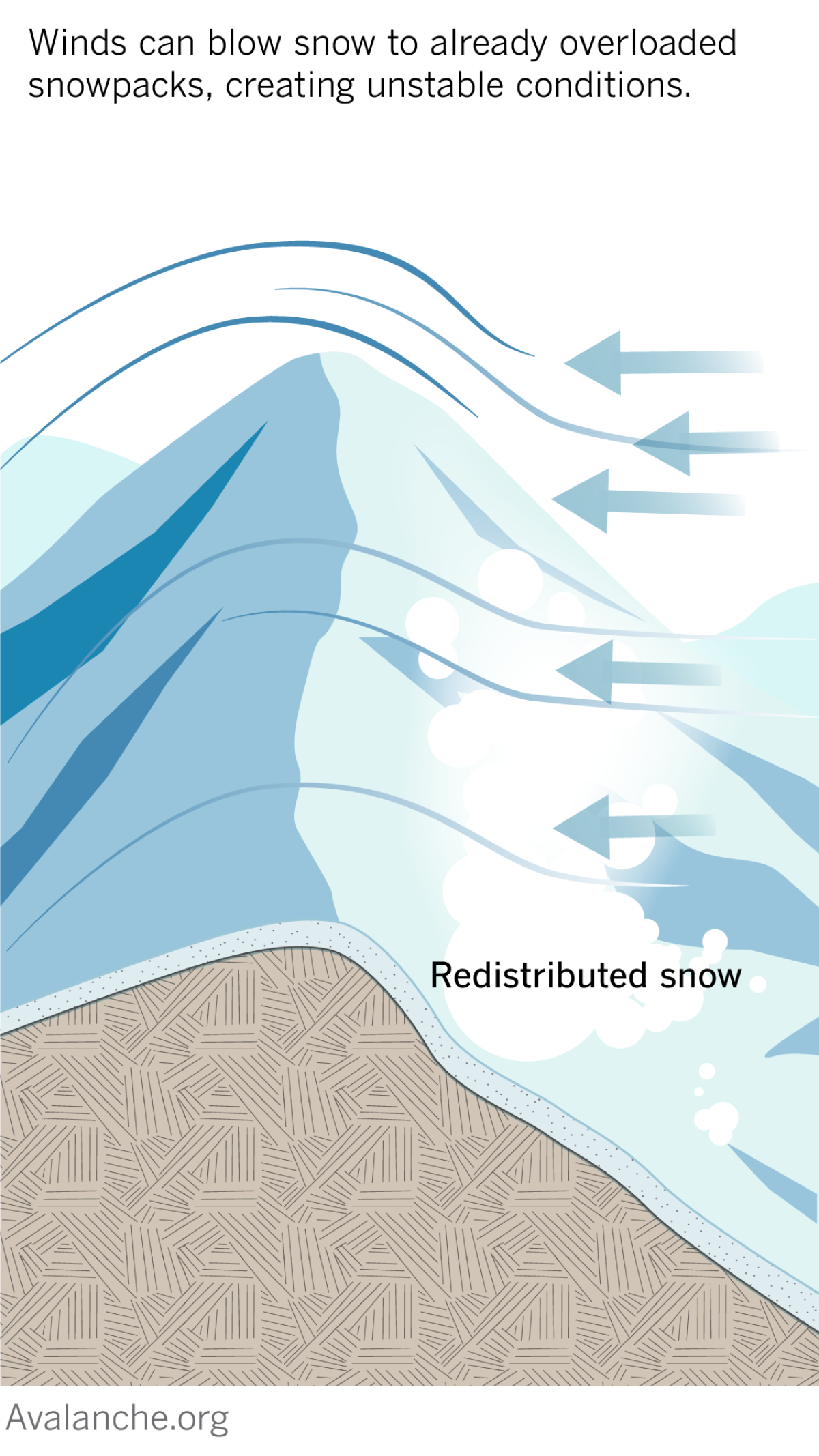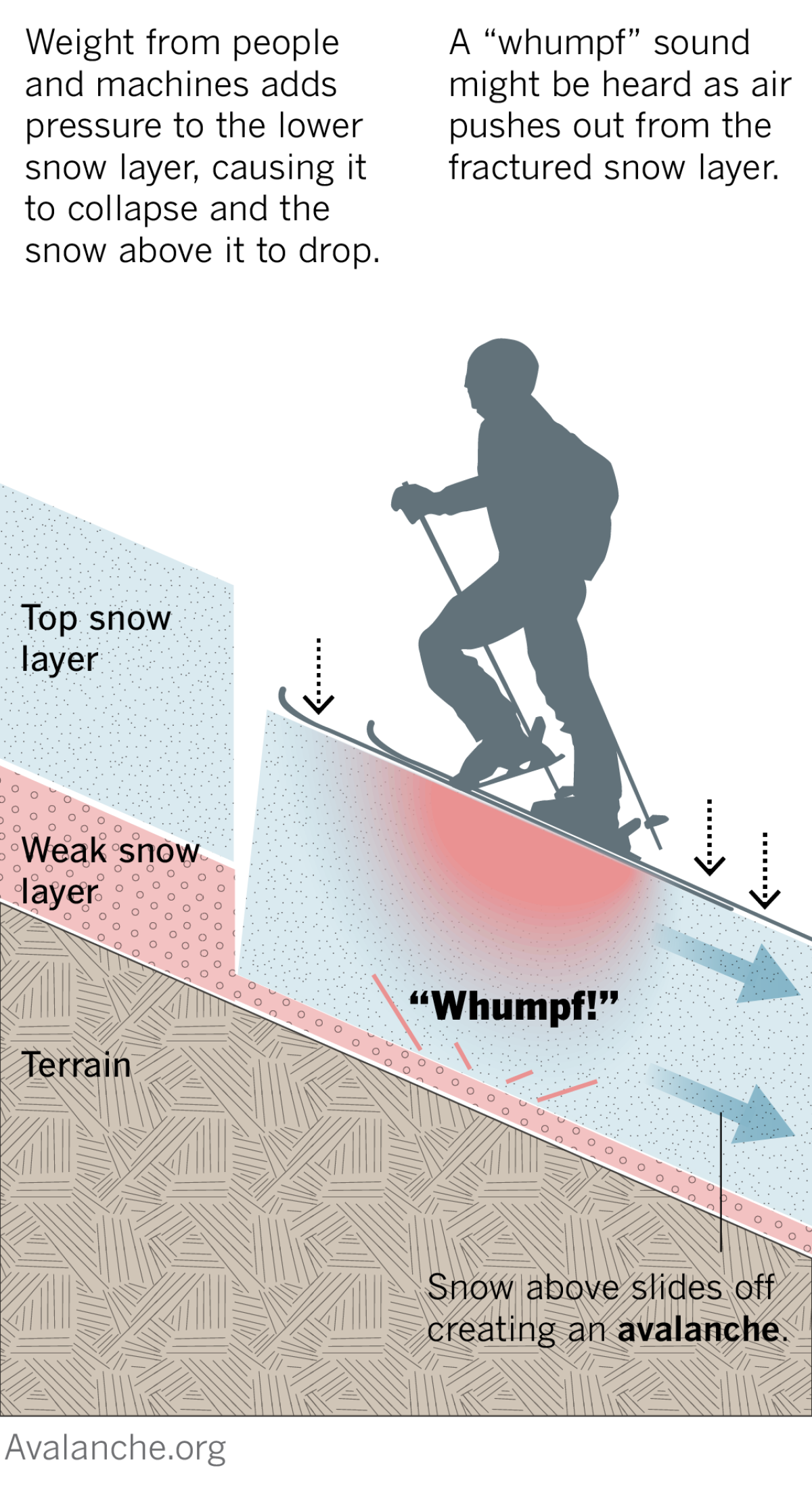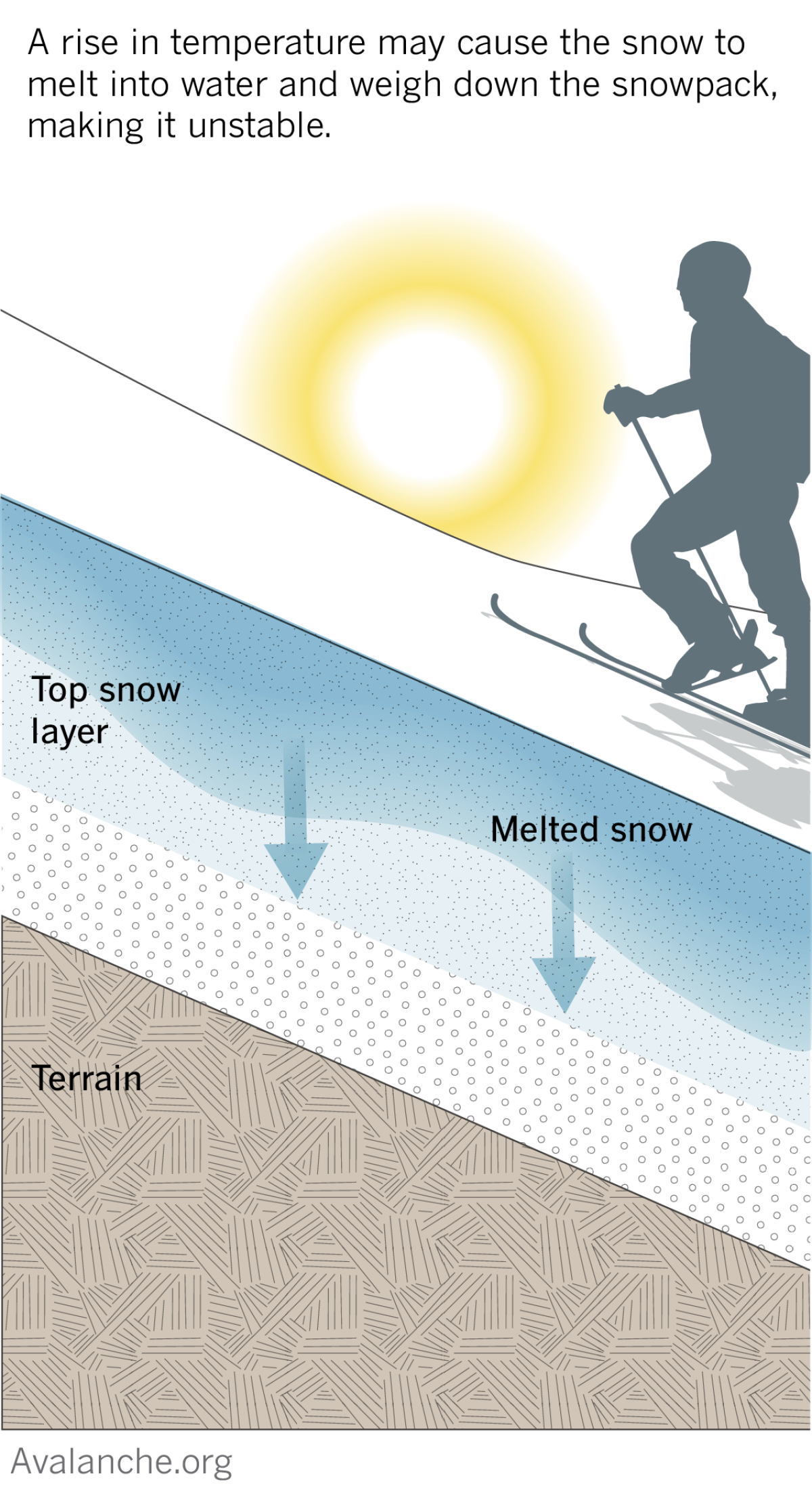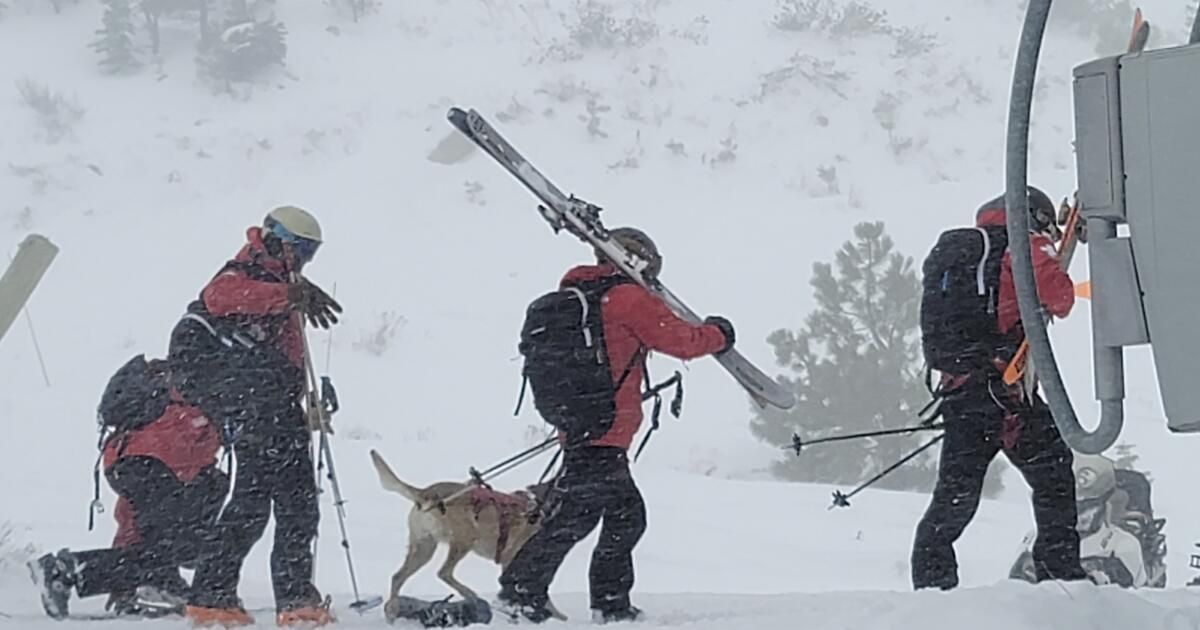Individually, each of these five warning signs generally does not mean there is avalanche danger, Keating said. But when observed in multiple cases, the risk increases and discretion is required.
Rapid snowfall: There's no scientific formula, but Caleb Burns, co-owner of SWS Mountain Guides, suggests that any significant snowfall in a short period of time can be a warning sign.
“If we consider 10 inches a day, 20 inches a day, that's a lot,” he said.
Signs of recent avalanches: Burns referred to avalanches as a “kind of herd.”
“If you see signs of an avalanche, there's probably more to come,” he said.
They may not be obvious to the untrained eye, but an old avalanche can look like “a still photograph of a waterfall” or a landslide painted white, he said.

Strong winds: These can easily move and displace snow, Burns said, and accumulate a thicker layer of weak snow in some areas.

“Hitting”: This is the sound you can hear when snow begins to fall, showing cracks on the side of your snowshoes or skis.
The sound is produced when air escapes through the snow due to the crack, Burns said. It's common to see small cracks when you walk or step on new snow, “but if a crack extends 10 feet away from you, that's not normal,” he said. “It is a sign of instability. “The snowpack is not good and something is happening.”

Fast heating: Sunny skies after a storm that dumps several inches of snow may be welcome, but they could also be concerning, Burns said.
Rapid and significant warming after a cold start can make the snow less stable.
“If you go in the morning and you have your layers [of clothing]and then at noon you are left with a T-shirt and then the snowpack changes,” he said.













